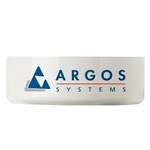Description

ArCADia-ARCHITECTURE

CorelDRAW
Comprehensive Overview: ArCADia-ARCHITECTURE vs CorelDRAW
ArCADia-ARCHITECTURE and CorelDRAW are two distinct software applications designed for different purposes and target markets. Below is a comprehensive overview of each, covering their primary functions, target markets, market share, user base, and key differentiators.
ArCADia-ARCHITECTURE
a) Primary Functions and Target Markets:
- Primary Functions: ArCADia-ARCHITECTURE is a BIM (Building Information Modeling) software designed for architects and engineers. It facilitates the creation of comprehensive architectural designs, including 3D models, technical documentation, and visualizations. It includes features like integrated object libraries, automatic cross-section creation, and structural analysis tools.
- Target Markets: The primary users are professionals in the architecture, engineering, and construction (AEC) industries, particularly those focused on designing residential, commercial, and industrial buildings.
b) Market Share and User Base:
- ArCADia-ARCHITECTURE is part of the ArCADia BIM system, which competes with other BIM solutions like Autodesk Revit and ArchiCAD. While it may not have the same market share as these industry leaders, it caters to specific segments that require budget-friendly and flexible BIM solutions, appealing particularly in certain European markets and by smaller firms looking for cost-effective alternatives.
c) Key Differentiating Factors:
- Cost-Effectiveness: ArCADia-ARCHITECTURE is often more affordable than its larger competitors, making it attractive for smaller firms and individual practitioners.
- Integration with ArCADia Suite: The software integrates seamlessly with other modules in the ArCADia BIM system, providing a comprehensive solution for various building design needs.
- User-Friendly Interface: It offers a user-friendly interface designed to be easy to handle, even for those with limited BIM experience.
CorelDRAW
a) Primary Functions and Target Markets:
- Primary Functions: CorelDRAW is a vector graphics editor used for graphic design, illustration, and page layout. It is particularly known for its robust set of tools for creating complex vector art and illustrative designs. Features include precision drawing tools, customizable workspaces, and support for various graphic formats.
- Target Markets: CorelDRAW targets graphic designers, illustrators, marketing professionals, and print media producers. It serves industries such as advertising, publishing, and any business needing graphic design capabilities.
b) Market Share and User Base:
- CorelDRAW competes with Adobe Illustrator and other graphic design software. While Adobe Illustrator holds a larger market share, CorelDRAW maintains a dedicated user base, especially among users who prefer its cost structure or specific features. It has a strong following in regions where Corel products have been historically successful, like Europe and some parts of North America.
c) Key Differentiating Factors:
- Affordability and Licensing Options: CorelDRAW offers more flexible and cost-effective licensing compared to some competitors, appealing to users looking for alternatives to subscription-only models.
- Ease of Use and Versatility: Its interface is often praised for being intuitive and easily customizable, with features accommodating both novice and professional users.
- File Format Compatibility: CorelDRAW provides robust support for various file formats, enabling seamless integration with other graphic design tools and workflows.
Comparative Analysis
- Market Share and User Base: ArCADia-ARCHITECTURE is a niche product within the broader BIM market, while CorelDRAW has a relatively substantial presence in the graphic design sector. CorelDRAW tends to have a broader global reach compared to ArCADia-ARCHITECTURE, which is more regionally focused.
- Purpose and Functionality: The key differentiator is the industry focus; ArCADia-ARCHITECTURE is specialized for architecture and construction, whereas CorelDRAW is designed for graphic design and illustration.
- Differentiating Factors: Both products stand out in their respective markets for cost-effectiveness and user-friendly design. However, their primary appeal lies in addressing the specific needs of their target industry — BIM functionalities for ArCADia and vector graphics for CorelDRAW.
In summary, while both ArCADia-ARCHITECTURE and CorelDRAW cater to creators and designers, they are optimized for vastly different applications within their markets. Their choice by professionals will largely depend on the specific needs of their projects and the industries they serve.
Contact Info

Year founded :
Not Available
Not Available
Not Available
Not Available
Not Available

Year founded :
Not Available
Not Available
Not Available
Not Available
Not Available
Feature Similarity Breakdown: ArCADia-ARCHITECTURE, CorelDRAW
When comparing ArCADia-ARCHITECTURE and CorelDRAW, it’s important to recognize that these two software programs are designed for different primary purposes. ArCADia-ARCHITECTURE is geared towards building design and architecture, while CorelDRAW is primarily a vector graphic design tool. However, they do share some core features, have distinct user interfaces, and possess unique features that cater to their specific application areas. Here’s a breakdown:
a) Core Features in Common:
-
Design and Drafting Tools:
- Both programs offer a range of tools for creating detailed designs. This includes basic drawing tools, shape tools, and the ability to edit lines and curves.
-
Layer Management:
- Layering is an essential feature in both ArCADia-ARCHITECTURE and CorelDRAW, allowing users to organize different elements of their designs efficiently.
-
Object Handling:
- The ability to manipulate, move, and adjust objects is a common feature. This includes resizing, rotating, and aligning objects.
-
Customization and Personalization:
- Both software platforms provide options for users to customize their workspace and toolbars to enhance workflow and efficiency.
-
Import/Export Capabilities:
- Both programs have robust import/export functions, allowing users to work with a variety of file formats to ensure compatibility with other software or projects.
b) User Interface Comparison:
-
ArCADia-ARCHITECTURE:
- The user interface of ArCADia-ARCHITECTURE is tailored for architectural design, featuring a toolbar with architecture-specific tools, such as those for walls, doors, and windows. The interface tends to be more specialized, focusing on 3D modeling and building information modeling (BIM) functionalities. It offers views like floor plans, elevations, and sections, which are specific to architectural design.
-
CorelDRAW:
- CorelDRAW has a more general graphic design interface, characterized by an artboard-centric workspace that is versatile for various types of graphic creation—logos, illustrations, and layouts. Its toolbar is more oriented towards artistic drawing and editing, with features for typography, color management, and effects.
c) Unique Features:
-
ArCADia-ARCHITECTURE:
- Building Information Modeling (BIM): ArCADia-ARCHITECTURE offers BIM functionality, meaning it can integrate 3D modeling processes that provide an advanced overview of building designs.
- Architectural Tools: Specific features for architecture, such as tools for creating building components (walls, roofs, slabs) and analyzing structural aspects.
- 2D and 3D Integration: Seamless alternation between 2D floor plans and 3D models to provide a comprehensive view of architectural projects.
-
CorelDRAW:
- Vector Illustration: CorelDRAW is renowned for its powerful vector illustration tools that allow for the creation of scalable graphics with precision.
- Color and Style Management: Advanced features for managing colors, fills, and text styles, with extensive color palettes and artistic effects.
- Typography Tools: Robust text handling options, including typography tools for creating intricate text layouts—a feature highly valued in graphic design.
In summary, while both ArCADia-ARCHITECTURE and CorelDRAW offer robust design tools, they each have unique features that cater to their specific user bases—architecture vs. graphic design—creating distinct user experiences suited to their intended applications.
Features

Not Available

Not Available
Best Fit Use Cases: ArCADia-ARCHITECTURE, CorelDRAW
ArCADia-ARCHITECTURE and CorelDRAW are two distinct software tools catering to different needs within the design and creative industry. Here’s a breakdown of their best-fit use cases and how they serve different industries and company sizes:
ArCADia-ARCHITECTURE
a) For what types of businesses or projects is ArCADia-ARCHITECTURE the best choice?
- Architectural Firms: It is ideal for small to medium-sized architectural firms focused on building design, renovation, and more. ArCADia-ARCHITECTURE provides a comprehensive set of tools specialized for architectural design, including building modeling and documentation.
- Construction Companies: Firms that need to visualize architectural plans and comply with construction documentation requirements can benefit significantly.
- Interior Designers: It is also suitable for interior designers who need to create detailed plans and visualizations, enabling them to present realistic concepts to clients.
- Educational Institutions: Schools and universities offering courses in architecture and construction can use ArCADia-ARCHITECTURE to teach students industry-standard practices in building design.
d) How does ArCADia-ARCHITECTURE cater to different industry verticals or company sizes?
- Industry Vertical: Primarily caters to the architecture, engineering, and construction (AEC) industry. Its features are specifically tailored for creating architectural designs, making it a valuable tool for entities involved in these fields.
- Company Size: More suited for small to medium-sized companies due to its cost-effectiveness and the learning curve associated, which may be more manageable in smaller teams.
CorelDRAW
b) In what scenarios would CorelDRAW be the preferred option?
- Graphic Design Agencies: Perfect for design agencies needing a powerful vector graphics editor for creating logos, marketing materials, and detailed illustrations.
- Marketing Departments: Corporate marketing teams can leverage CorelDRAW to design brochures, business cards, and other promotional materials.
- Advertising Firms: For creating eye-catching advertisements and brand-related graphic content.
- Print Shops: CorelDRAW supports high-quality print output, making it a staple for businesses that require precise print production.
- Freelance Designers: Individual designers can use CorelDRAW for a wide range of design projects, thanks to its versatile and extensive toolkit.
d) How does CorelDRAW cater to different industry verticals or company sizes?
- Industry Vertical: Primarily serves the graphic design, marketing, and advertising sectors but can be used in any industry requiring graphic content creation.
- Company Size: Suitable for businesses of all sizes, from freelancers to large corporations. It provides scalable solutions that can fit the needs of both solo operations and large teams, offering collaboration tools for bigger projects.
In summary, ArCADia-ARCHITECTURE is most beneficial for architecture and construction-related projects, focusing on building design and documentation, making it ideal for SMEs in the AEC sector. CorelDRAW, on the other hand, serves a broader range of creative industries, providing powerful vector graphic tools advantageous to graphic designers, marketers, and print professionals across various business sizes.
Pricing

Pricing Not Available

Pricing Not Available
Metrics History
Metrics History
Comparing undefined across companies
Conclusion & Final Verdict: ArCADia-ARCHITECTURE vs CorelDRAW
To determine which software offers the best overall value between ArCADia-ARCHITECTURE and CorelDRAW, it is essential to consider their intended purposes, core functionalities, and user needs. ArCADia-ARCHITECTURE is focused on architectural design, while CorelDRAW specializes in vector graphic design and illustration.
a) Considering all factors, which product offers the best overall value?
The best overall value depends on the user's needs and industry. For architectural design and BIM (Building Information Modeling) tasks, ArCADia-ARCHITECTURE is the more suitable choice. Conversely, for graphic design, illustration, and branding tasks, CorelDRAW offers better value. The specialized nature and tools offered by each make them particularly valuable in their respective fields.
b) Pros and Cons of Choosing Each Product
ArCADia-ARCHITECTURE
Pros:
- Specialized for Architecture: Offers tools specifically catered to architectural design, including BIM features.
- Integration: Compatible with other CAD software, which is advantageous for collaboration in design projects.
- Cost-Effective: Generally more affordable than some other high-end architectural design software.
Cons:
- Niche Use: Limited to architecture-focused functionalities, unsuitable for general graphic design tasks.
- Learning Curve: May require training or experience with CAD software for effective use.
CorelDRAW
Pros:
- Versatility: Useful for a broad range of graphic design tasks, from illustration to typography and layout design.
- User-Friendly: Known for an intuitive interface that is often easier for beginners in graphic design to grasp.
- Cross-Platform Availability: Offers applications on multiple platforms, including Windows and macOS.
Cons:
- Not Suitable for Architectural Design: Lacks specialized tools needed for architectural modeling or BIM.
- Price: Subscription-based pricing can be a deterrent for budget-conscious users compared to perpetual licenses.
c) Recommendations for Users Deciding Between ArCADia-ARCHITECTURE vs. CorelDRAW
-
Define Your Needs:
- If your work involves architectural designs, floor plans, or requires BIM capabilities, ArCADia-ARCHITECTURE is a clear choice.
- For graphic design needs such as creating vector illustrations, designing logos, or managing print layouts, CorelDRAW is more appropriate.
-
Consider Learning and Resources:
- Evaluate the availability of tutorials, support, and community forums for each software. CorelDRAW tends to have a more extensive user community, which can be a valuable resource for new users.
-
Budget Constraints:
- Factor in not only the initial purchase or subscription cost but also any additional costs related to training or additional features.
Ultimately, the decision should be based on the specific tasks users need the software to perform. Both products offer substantial value in their domains, but serve different professional needs. Users should match the software to their project requirements for optimal results.
Add to compare
Add similar companies



